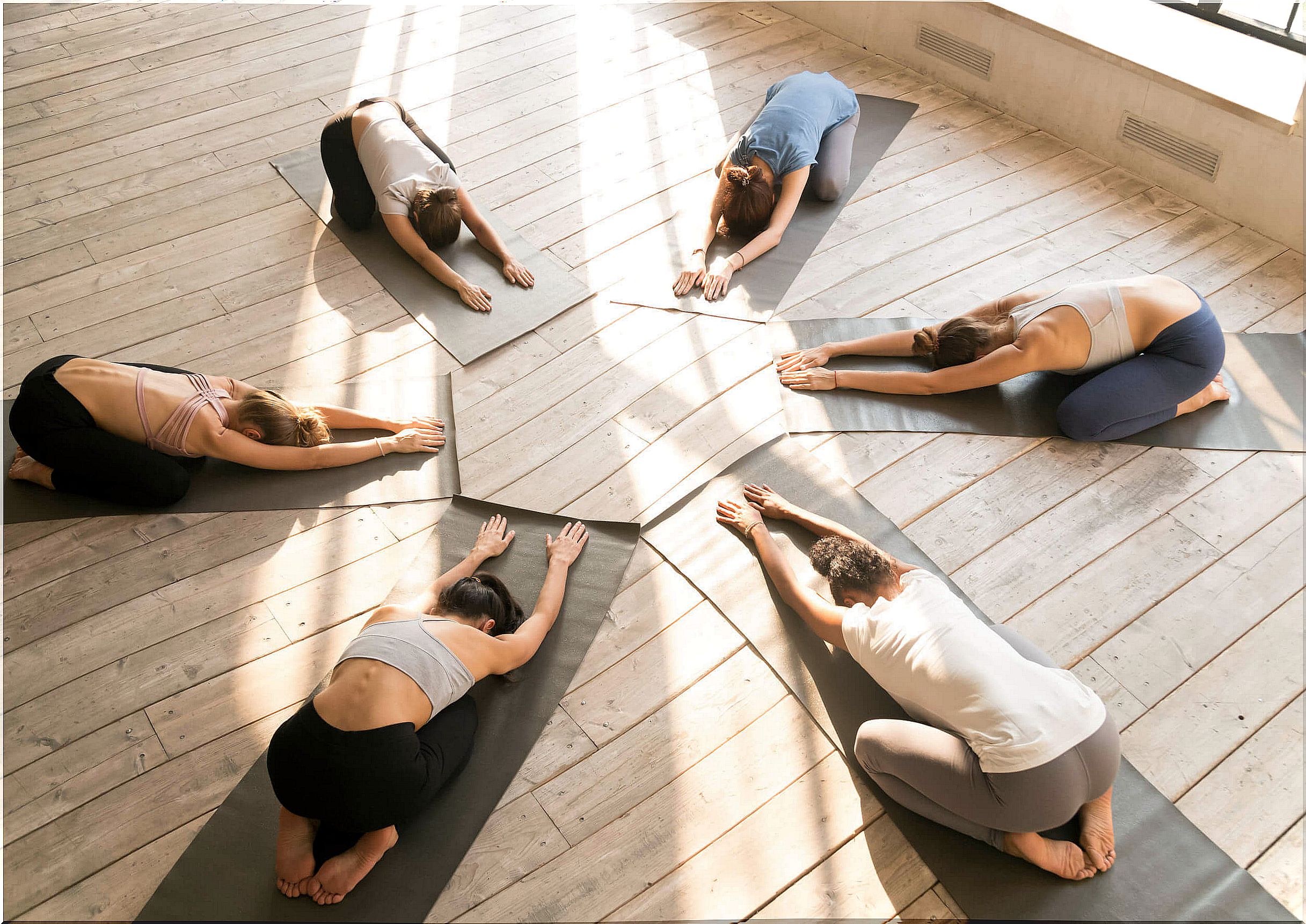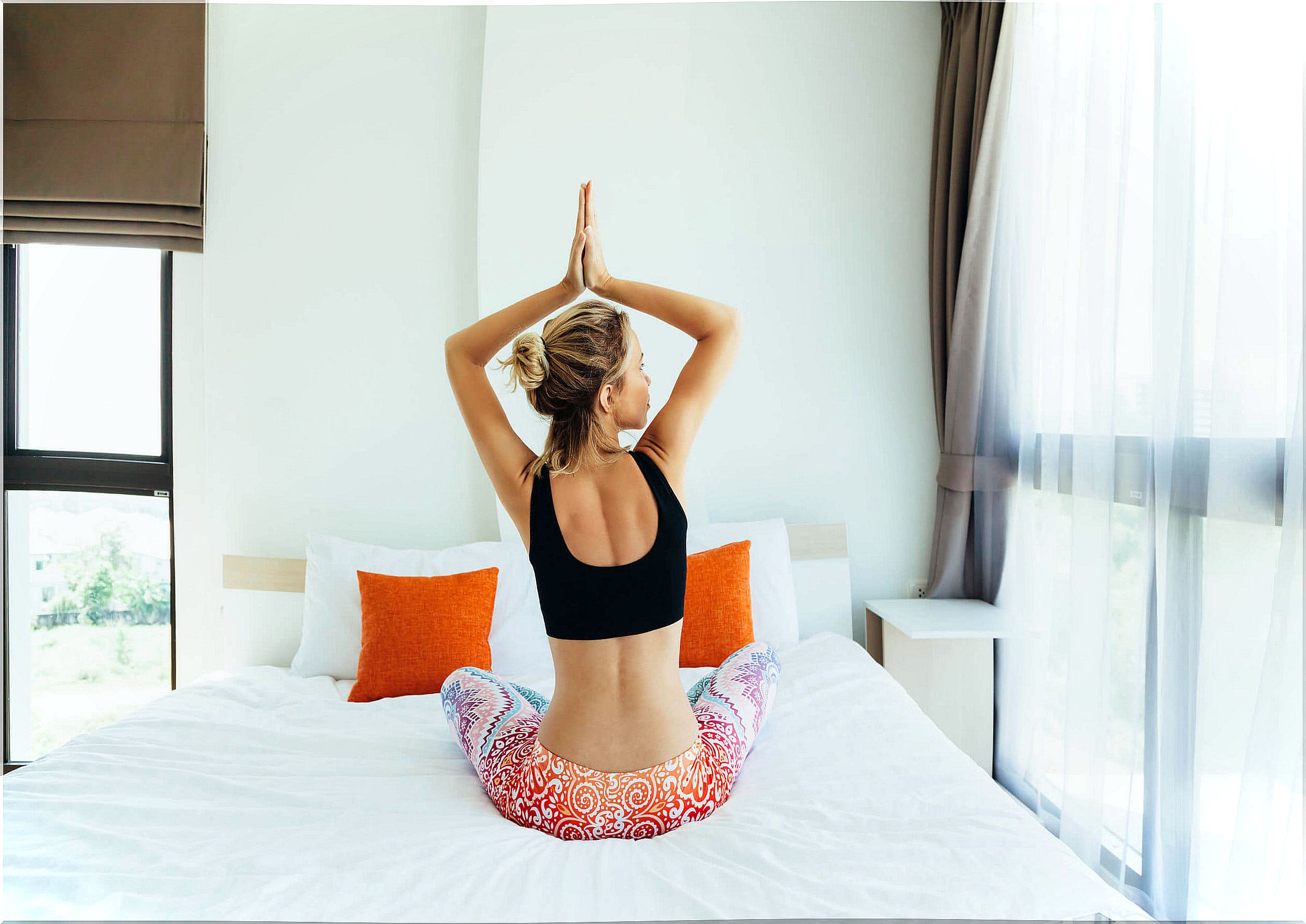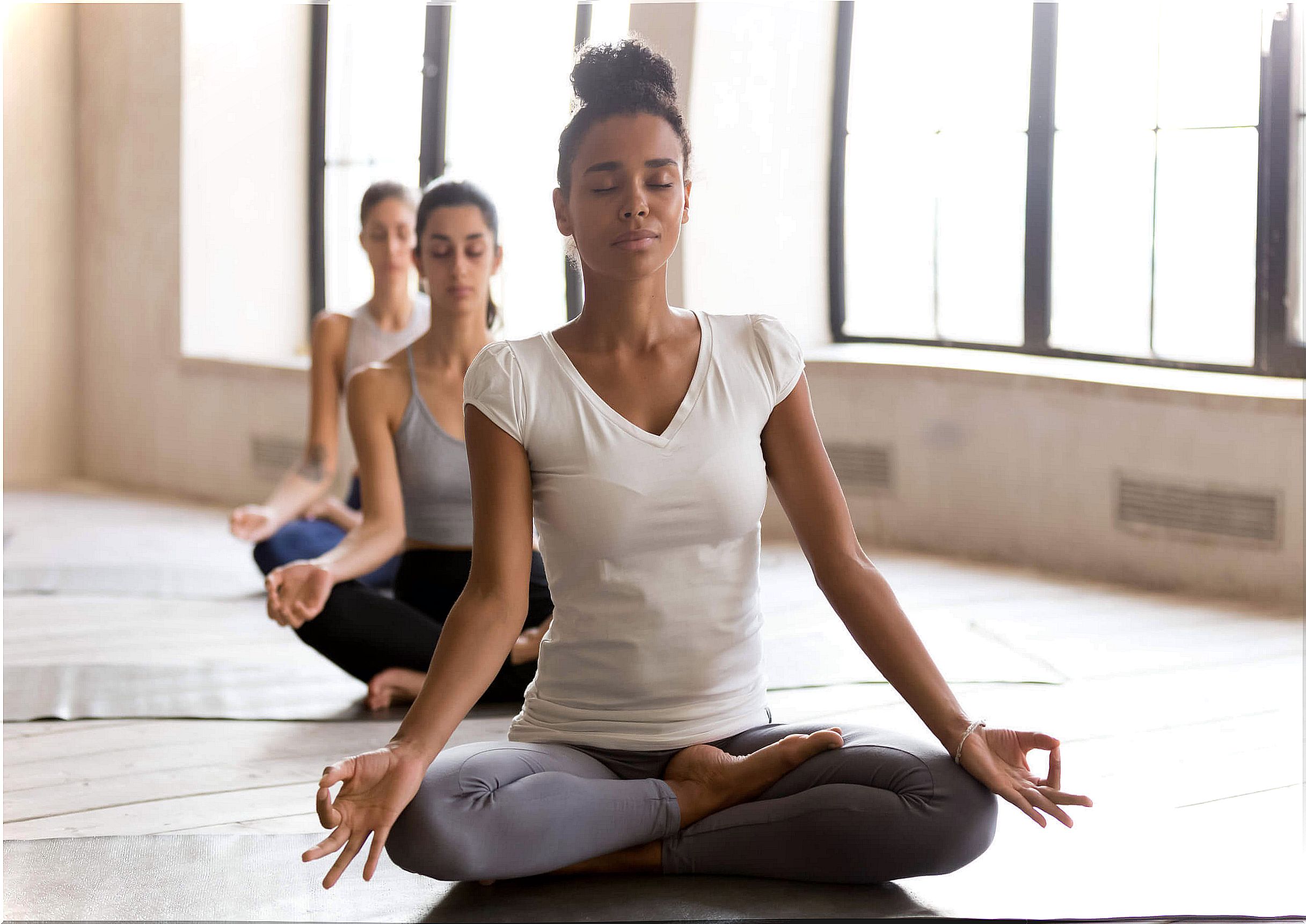Breathing Fire In Yoga: 6 Benefits
Breathing fire is a beneficial technique for the body, but it should be done with caution and under supervision. Its favorable consequences will surprise you!

The pranayama is breathing technique used in yoga, and comprises various exercises that complement the Asana -posturas- each yogic mode. The breath of fire is one of those pranayamas, and it has multiple benefits for the body.
One of the most important factors within yoga is breathing, because it allows the yogi to relax by inhaling and exhaling deeply while performing the asanas. This helps calm the mind, release tension and oxygenate the brain, as stated in a study published in the Annals of the New York Academy of Sciences .
What is the breath of fire?
The Sanskrit name for the breath of fire is kapalabhati; the term kapala translates as ‘skull’ and bhati as ‘cleanse’. Therefore, it refers to the cleansing of the mind.
As we will detail later, this exercise helps control anxiety and reduce the effects of nerves, worry, sadness, pain, and fear.
The most common posture to do this pranayama is that of the lotus, that is, sitting with the feet bent and crossed, the back straight and the hands on the knees.
How is it done?
The kapalabhati is to breathe in gently – if you are a beginner – and deeply through the nose to fill the lungs, and exhale with force to expel all the air.
Expiration is also done with the nose, and the abdomen must be contracted towards the spine, in order to stimulate the diaphragm. The rhythm of the breaths increases as the student masters the technique.
What are the benefits of fire breathing?
Practicing the breath of fire has multiple benefits related to emotionality and the functioning of the organism. Next, we are going to detail some of them.
1. Regain control in stressful situations

By breathing in a controlled manner, concentration increases and the mind clears the negative energies that cause stress and anxiety. The relationship between the rhythm of breathing and anxiety was confirmed by research published by Respiration and Emotion .
When we are stressed, the diaphragm contracts inwards, right towards the solar plexus area, which is where all emotions are “stored” according to Hindu tradition.
With the breath of fire, emotions can flow out of the body, if necessary, to balance the body and improve mental and physical health.
2. Purifies the blood and lungs
This breathing exercise contributes to improving circulation and purifying the blood, due to the amount of oxygen that is inhaled. The advantages of these deep and full inhalations and exhalations are confirmed by several studies cited by the International Journal of Yoga .
Yogic theories hold that, by expelling all the air, there is no residue of it within the system. This allows new and cleaner air to reach the lungs when you breathe in again.
3. Increases lung capacity
Human beings do not usually use our lungs to their maximum capacity because we usually breathe in a limited way. This means that we take short breaths that do not fill the lungs with air.
If the fire breathing is practiced frequently, the lungs will become accustomed to progressively storing more air. Research published in 2005 by Respiratory Physiology & Neurobiology states that yoga improves respiratory functions in certain people, although this is not the case in all practitioners.
4. Strengthens the navel chakra
This chakra, also called Manipura and which is the third according to Hindu culture, is in charge of concentrating the emotions. It is the largest and most powerful chakra of all; it is related to actions and emotions.
Have you ever felt an “empty stomach” when you are scared or sad? According to yogic beliefs, this may be due to the manifestation of this chakra in your body.
5. Helps memory and concentration
Taking deep breaths not only oxygenates the blood: the brain does too. Yoga and its breathing techniques improve cognitive abilities and concentration, as confirmed by the American Psychological Association .
6. Stimulates the functioning of the digestive system
While doing the breathing exercise, the digestive system is activated due to the movement of the diaphragm.
In this way, with the practice of yoga, better digestion is obtained and discomforts such as irritable bowel syndrome are alleviated, according to a study published by Evidence-Based Complementary and Alternative Medicine .
Precautions when breathing fire

If you are starting to practice breathing fire, always do it under the supervision of your instructor until you learn to master it. It is a delicate technique that takes time and patience.
Do not take fire breaths so fast if you are a beginner because you could get dizzy. The respiratory system is probably not used to receiving and expelling so much air in this way; let him get used to it progressively so you don’t overload him.
If you get dizzy, stop the exercise. Do not continue if you start to feel bad because, due to the sudden shock of the air inside the lungs, the lungs will tire and could cause you to pass out.
A study published in the journal Chest details a case of a woman who developed a spontaneous pneumothorax – that is, an air entry into the pleural space that lines the lungs – performing this technique without supervision.
Although this is a unique and extreme case, it is an example of what can happen if you overextend your body.
Fire breathing contraindications
This exercise is contraindicated for pregnant or menstruating women. It is also not recommended for patients suffering from epilepsy, hypertension, pulmonary emphysema or cardiovascular diseases.
Beyond these cares and contraindications, fire breathing is a beneficial technique because it favors mental health and because of the other advantages already mentioned. With it, you can focus on everything that happens inside you and it will make you more aware of your being.
However, it is an exercise that should be done with caution if you are just a beginner, or even if you have done it before but want to demand a little more from your body. The key to yoga is to be patient. You will not see progress overnight, but you will surely notice it over time.









